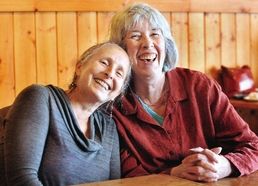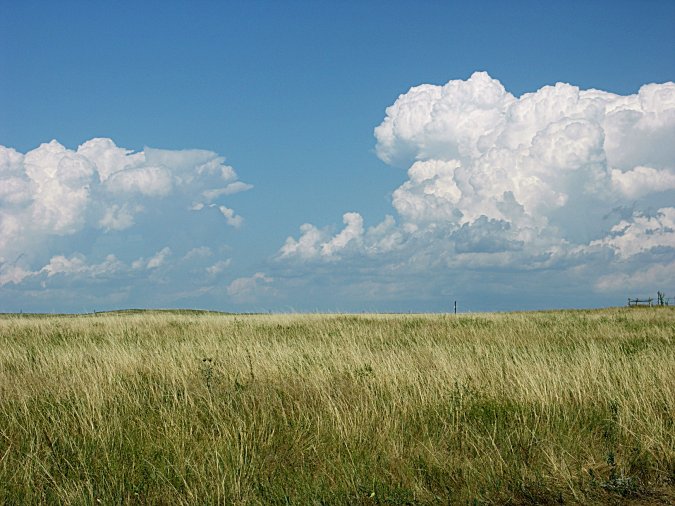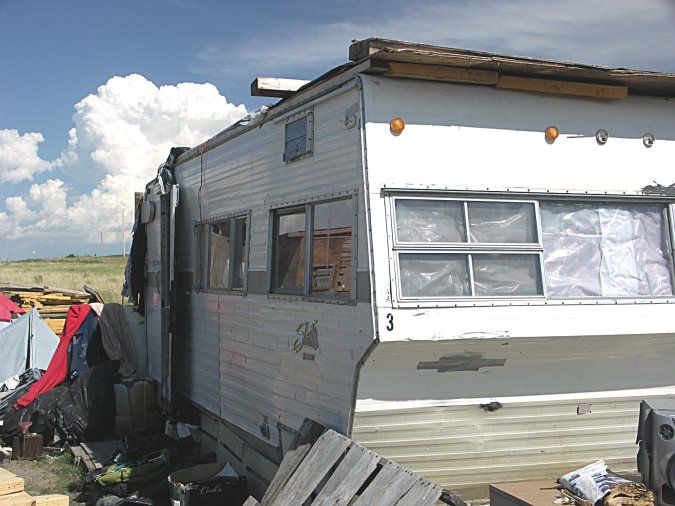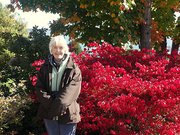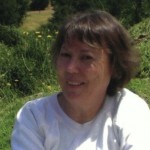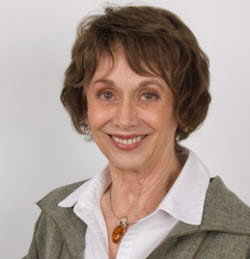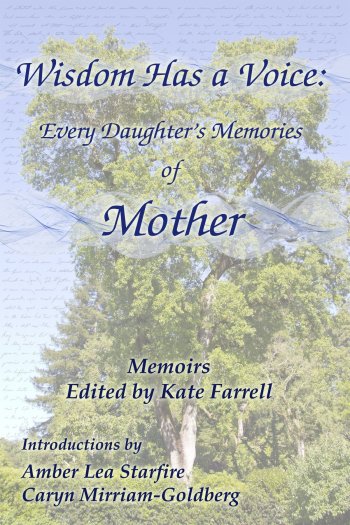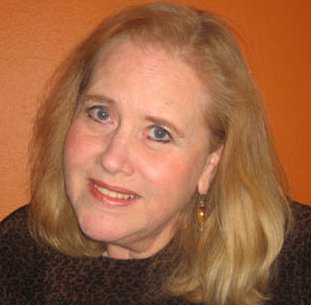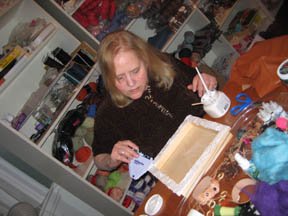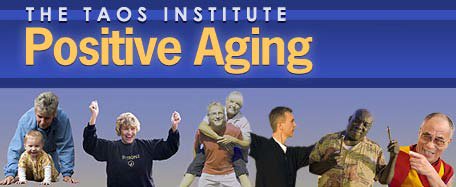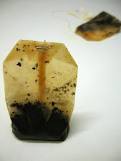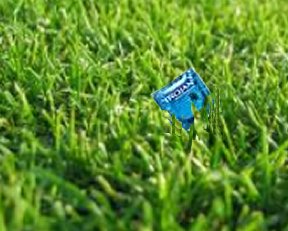 Issue
#31, November, 2011
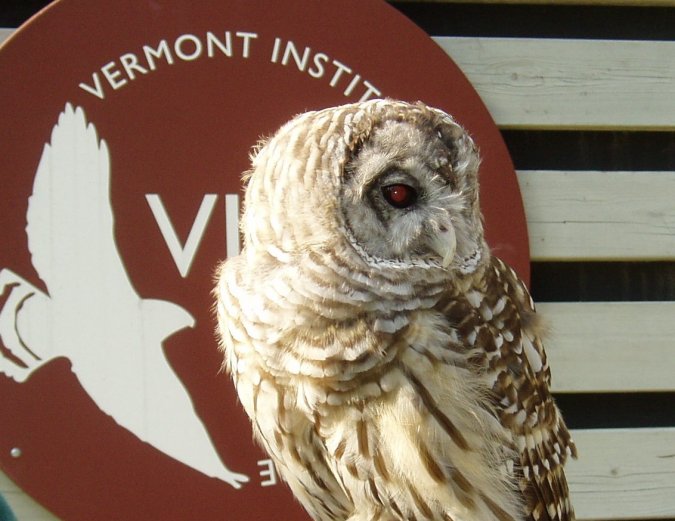 Welcome to the November 2011 issue of the Elderwoman Newsletter - an e-zine for 21st century elderwomen committed to radical aliveness. CONTENTS
View from the Desk Feature Articles - A New Wrinkle - Gaea Yudron - My Visit to Pine Ridge Reservation - Toni Snyder - What More Could a Daughter Ask? by Maria Klassen - Creativity Matters - by Judith Zausner - Altruism: Lessons for the New Aging by Ken and Mary Gergen Reports/News/Bits and Pieces Call for Submissions Last Laugh VIEW FROM THE DESK
A New Wrinkle: A Paradigm-Shifting Musical Revue on Aging by
Gaea Yudron In
2009, I decided I wanted to write a
musical revue about aging, “a subject as thrilling as the Oscars, or
even
Death!” as the magical hag Baba Yaga quipped early on.
Gaea wearing her Baba Yaga Hair Modern
culture is youth-adoring, speedy,
short-sighted and superficial. The profound qualities that older people
bring
into society are largely unrecognized. There’s
something inherently creative about
living a long time, even if you don’t design great buildings or write
marvelous
poetry. Age brings a broader perspective, development of character,
depth of
understanding and integration. I wanted to write about that. I wanted
to debunk
ageist stereotypes and portray a more vivid, life-affirming vision of
aging and
elders. So I sat down to create some songs. What an exhilarating
experience it
turned out to be! Song lyrics poured out of me as if they had been
standing
around in the vestibule just waiting to make themselves known.
The
first song I wrote was Passing for
Young. A sardonic commentary on cosmetic surgery and other anti-aging
tactics,
it’s sung by a character much like Barbie, the famous doll. Next I
wrote Baba
Yaga’s Raga, which celebrates the dangerous old woman, a topic beloved
Clarissa
Pinkola Estes has been discussing these days in new CDs. Then I wrote
Reclaiming
Old, a lyrical choral piece extolling the value and beauty of oldness. I
wanted to be sure to cover certain topics
and issues in the revue. One song, Hip Hop Elder’s Rant, protests
warehousing,
overmedicating and other dehumanizing ways of treating elders. As Hip
Hop Elder
says: “I’d rather wrap myself up in a sheet/ and pray my prayers out on
the
street/ than get sent to old folks’ prison/ just because I’m frail and
wizened.” The
song Sex After 60 has a playful
My Visit to Pine Ridge Indian Reservation .In
the summer heat of August 5th, my spouse
Wayne and I pulled out of our driveway to start the trip to Pine Ridge
Indian
Reservation in the southwest corner of We
had agreed to follow a 26ft truck loaded
with clothing and household items donated by various organizations in When we turned off I90 onto the reservation, my first surprise was the wide open geography of soft rolling hills dotted with small pine trees. I didn’t expect grassland hills. “This doesn’t look so bad” I said. “I thought it would be barren and dusty.”
As we drove on I saw individual homes far off the highway, isolated and separated by miles. The expansiveness and isolation of the reservation overwhelmed me. Our
contacts, Jerome and Theresa High Horse
had worked for the Bureau of Indian Affairs in The
Reservation is divided into nine districts
and nine communities. We stayed in Wanblee, a small community in The High Horse family provided their home for us to stay in. It had enough bedrooms to house all of us. The basement had bunk beds for the men. Jerome welcomed us, saying, “This is my home: now it is your home too.”
We did feel at home. The High Horse family is very comfortable with strangers in their home. I was the only white woman with white hair and the High Horse small grandchildren looked at me with curiosity. Later I fed a three year old his supper while he cautiously looked sideways at me. Then he said something to me in Lakota language. I smiled, not understanding what he said but replying “Oh,” and hoping it was an appropriate response. We spent the next two days unloading the truck and delivering frozen meat to families chosen by Jerome and Theresa. Delivery was unexpected and those receiving the meat treated it as a special gift. I was hugged by Indian women who had tears in their eyes. Fresh or frozen meat is limited on the reservation. I heard expressions of gratitude spoken in Lakota language. With Jerome being the interpreter, we encouraged people to cook the meat as soon as it thawed as most homes don’t have a freezer. We also needed to explain how to cook the Canadian bacon. Even our hostess, Theresa High Horse had never seen this type of meat. We drove far and wide between homes. I saw one-storey homes with faded, peeling paint, weedy yards and rutted, mud driveways. It was common to see two to four cars, or pickup trucks, in various stages of disrepair scattered in the yards. We all were troubled by what we saw as neglect of buildings and yards. We never saw the inside of homes, and I’m glad.
We stopped for gas at the only mart in Wanblee. Inside, packaged and processed food and ‘junk food,’ is sold. I took note that fresh vegetables and fruit are not available but milk, eggs and butter are. Prices are high. It’s obvious the owner can charge whatever he wants because there isn’t any other place to purchase food. I became irritated with the realization that grocery stores are non-existent on most of the reservation. Government canned food, flour, sugar, coffee, beans and rice are distributed monthly to those who can get to a distribution center. Obesity and diabetes are on the rise because of the diet. We
visited families that live year round in
tiny trailers. Shacks
are used as houses,
most without electrical power and running water. Weather conditions are
severe,
both summer and winter. Another volunteer group we met stated that
6,000
sustainable homes are needed for proper housing.
A group from
I expected to see poverty, but wasn’t prepared to see people who appear to have lost respect for themselves and didn’t want to better their conditions. “How can this happen?” My senses picked up everything that is opposite of how I experience life. Only later did I realize that I was seeing their lives through my eyes. Lakota Indians have always lived on the prairies, not in the conformity of modern cities. But I felt their powerlessness and abandonment. Ian Frazier wrote in his book On the Rez, “There is an aura of unstop-ability that misfortunes acquire.” Problems are great: school dropout is high, no industries or places to work, social services spread over the reservation, no public transportation and little infrastructure. Alcoholism is rampant, with no treatment available. We
drove to the border of Survival is intermingled with love. I saw a man and woman walk down the road holding hands. I watched Jerome teach his grandsons and sons-in-law ways to respect women, children and the elderly. I bought a beaded bracelet from a young Indian woman who is self taught and supports her two sons, her sister and baby with her sales. Families are important and laughter is heard when they get together. Families will take in another member no matter how distant the relation is. A group of teenagers independently took on a project to prevent adolescent suicides. We left with gifts in our hands because of a Lakota tradition that guests always received a gift from the host. A horse hide box decorated with Lakota designs is my gift. It now has a place of honor in my home. Jerome High Horse is a story teller. While listening to how High Horse became their family surname I was reminded of a dream I had over 30 years ago. When I privately told him about the dream, he paused and then spoke seriously, looking me straight in my eyes. “Now your dream has brought you here. This is what your dream was telling you. You have completed your circle.” Call it an ‘aha moment,’ insight or intuition, I was overcome with a sense of connectedness. At age 74, I now feel a purpose outside that of my family. I have a calling to do what I can to ease the strife I saw on the reservation. I pray for “serenity to accept the things I cannot change, courage to change the things I can and the wisdom to know the difference.” I am now coordinating a clothing drive with six churches in my local area for another truck load to deliver to Wanblee. Karl is providing pallets of applesauce, oatmeal cookies and canned kernel corn. We’re aware of winter closing in and hope to get the truck out while we still can.
I
enter my mother’s room, always with a
sense of despair after the walk down the hall. My mother’s face lights
up and
she greets me with a smile, a hug, and a kiss. I don’t know how she can
be so
cheerful when she lives with disease and death, on the other side of
her door,
every day of her life. She really shouldn’t be living here I think to
myself
again. But we have hashed through this many times. My father needed the
assistance of a long-term care home in the small When he asked my mother to move in with him, she didn’t think twice—she had married him for better or worse, and she would go with him. He died two years later, and we offered her several choices of where to live. She decided to stay; the transition had been hard for her, and she didn’t want to move out just to move in again. So it was her decision to stay—I question it every visit—should I have pushed harder for her to change her mind?
Inside
her room I momentarily forget what is on the other side of her door. We
quickly
move into another world, her world. We go on a journey, delving into
her past.
She has kept diaries of her life and, and since I have visited
Neuendorf, the
village in the She often has music playing when I come into her room. If her knees weren’t crippled with arthritis, I swear she would be dancing. On Saturday afternoons (when I was growing up), when the house was tidy and the chores were done, she would put on music and we would dance around the dining room table. I still love a Strauss waltz.  I look at her closely. She is wearing a soft pink sweater that complements her gray hair. She always wears her strand of pearls, given to her by my father on their twenty-fifth wedding anniversary, when his business was doing well. She does not look eighty-nine years old. She has aged gracefully. I can only hope I have inherited her genes. She has wrinkles, but fewer than women twenty years younger. Her face does not reflect the hard years of her life. She
always asks about my children, her grandchildren. Family is so
important to her
since she had sixteen siblings. She has told me many times how often
her mother
was pregnant. That is one of the pictures she has of her mother—always
pregnant. Only nine children lived to become adults. She tells of a
sister who
died in
She tells of twin brothers who were born prematurely in Neuendorf and died within two days, as there was no hospital, clinic, doctor, or nurse who knew what to do in the village of the communist country where they lived. Her mother nearly lost her life giving birth and was unable to care for the twins. Her father set them on clean straw by the wood stove to keep them warm, but it was not enough. My mother was too young to help or even know what was happening. The weak cries of death haunted her for years. Does one ever become immune to the ravages of death? My mother’s mother lost her parents as a teenager. They died within days of each other. A few years before that, my grandmother’s three siblings died within hours of each other and their funerals were on the same day. When the family came home from the funeral, a fourth sibling had died. All from the deadly disease of typhus fever that spread through the Mennonite villages. My mother thought of her mother as a heroine—because she had faced death so many times and was able to go on living in spite of the tremendous pain.
We speak German. My mother grew up speaking a Dutch dialect similar to German that the Mennonites had brought with them when they migrated from the land around the Dutch-German border over a hundred years previously. It wasn’t a written language. So with her children she spoke German, a proper language that we could read and write. I have little opportunity to speak it, so I appreciate keeping up my language skills in conversations with her. Then she asks me how I am doing. This is also important to her as she nursed me through years of a life-threatening illness. I will never forget how encouraging she was. She would cook anything I wanted just so I would eat. She supplied me with books of various genres; we still share a love for reading and read some of the same books. She always had an amusing story to tell me then: what was happening in the neighborhood, or something she had read, or an original tale. I never saw her discouraged with my health issues or me. Many years later, she shared her worries and concerns, her personal battle with the possibility of losing me, her first-born child; but I never saw that—ever.
In
keeping with our routine, the next topic is our country. She has always
loved Next she asks me if I was in church. I hear her voice in my head every Sunday morning, and sometimes I go, just to get that voice out of my head. God and faith sustained her through many hard years, when she didn’t know if, or how, she and her family would survive. This, she says, is the most important part of your life, your faith in God. She grew up without being able to attend church. During the communist era all the churches were closed down or converted for other uses. Parents were not allowed to talk to their children about God or read the Bible in their own homes.
At
state-run schools, innocent young children were asked what their
parents talked
about. If religion was mentioned, a wrong answer, a one-way ticket was
given to
that parent to the labor camps in the north, to We
then share a treat I have brought. She so loved cooking and baking and
made
many ethnic dishes for us—borscht, vareniki, perishki, pfefferminz and
kuchen,
and zwieback. Now I try to bring her a taste of some of those special
ethnic
dishes, like platz or paska. She is always so appreciative of anything
I bring.
She vividly remembers the many years of famine she and her family
experienced
in the
There
were times in her childhood that the
only way the family survived was because of care packages sent to them
from
relatives already in My mother loved to have the extended family gather at our house on weekends. I grew up with many cousins and still see many of them regularly. It didn’t matter who or how many people dropped in on a Sunday afternoon, there was always, and I mean always, enough food for everyone. And the laughter, never did I hear an argument, always good clean fun. My uncles could entertain us children with a simple toy for hours. She still sees her surviving siblings on a regular basis; they celebrate all birthdays.
I have observed how she deals with the other residents in the home. She sits with someone who isn’t mobile, pushes a wheelchair for someone who wants to go somewhere. She butters the bread of one of her tablemates. She holds the songbook for someone who can’t. She brings in jigsaw puzzles and lends many of her books to others, knowing she may never get them back. She is patient. She listens. She seldom complains and is always appreciative of what she has. And my life lessons continue . . . . So I spend my Sunday afternoons with my mother, because I think Sunday afternoons should be spent with family. We talk and we laugh; we cry and we eat. I stand in awe of a woman who came from so little and learned to give so much. She modeled commitment, affection, optimism, style, realism, family, health, patriotism, faith, culture, history, good food, compassion, the love for language and music. She knew that attitude and gratitude were important, long before they became fashionable buzzwords. She is my definition of love. She gave me roots, and she gave me wings. She taught me, and still teaches me, by her life. What
more could a daughter ask?
I am a creativity advocate. Through my Caring Crafts business (www.caringcrafts.com), I offer unique craft kits and supplies for those who may have cognitive or fine motor difficulties. The goal is to empower creativity and self-esteem which will contribute to improve a person’s well being. As my interest has grown so has my involvement in this field. I write the Creativity Matters blog (http://agingandcreativity.blogspot.com) which is also featured as a column in print, design and lead Creativity Workshops using crafts for older adults, and deliver creativity focused presentations that are both information and inspiration based. In 2010, Seeking Solutions with Suzanne, a national Comcast television program, featured my segment demonstrating Caring Crafts kits. In addition, I was a recipient of a grant from The Society for the Arts in Healthcare and was given a National Mature Media Award for my article “When Creative Success Comes Later in Life”
Background on Caring Crafts, Inc. I have always been aligned with the world of disabilities on a personal level because of family and friends and also on an academic level with some course work in Occupational Therapy. And then there is the designer and entrepreneur elements in me that ignite my soul. So I never foresaw how all these parts could be combined with a purpose. But it happened one evening. I was having dinner with a friend and his friend who was struggling with Multiple Sclerosis, a disease that I have met too often in my lifetime with people I loved. In conversation, she casually mentioned the recent home visit of her therapist. I learned that she was working with a pegboard and was not given any projects to create. So surprised by that, I inquired more and was met by more of the same. And so it resonated in me. Thinking that I would surprise her, I searched the web for appropriate craft sources but found nothing. So all of this cooked in my brain and my soul until finally the idea of Caring Crafts was born.
In the course of designing these kits, it was clear that my Attention Deficit Disorder problem was now an asset (I never relished small tedious work but loved designing). I realized that I was building a business for one group (adults with fine motor skill difficulties), but that people with concentration problems could thrive with these projects as well because they not only avoid grueling detail work but they are very simple and quick. And then another interesting event was presenting the kits to adults without any overt problems and they said that they wanted to make the kits! So now my kits have universal purpose; they are “inclusive” and can be enjoyed by adults with or without physical limitations. Judith website is at: http://agingandcreativity.com and she blogs at: agingandcreativity.blogspot.com By Mary and Ken Gergen Excerpted from the Positive Aging Newsletter
The issues are complex because receiving help may define us in certain ways. For women, it is especially complex because there is the tradition of chivalry in which help from a man is a complement. There is also the feminist view that such help sustains the traditional stereotype of strong men vs. weak women. And so it is that as we age, attempts to help us seem to cast us into the dustbin: "You are old!" Behind the smile of gratitude, we might painfully be asking, "Do I really look that old?" Sometimes it is annoying, as in the cartoon when the old lady tells the Scout, “But I didn’t want to cross the street.” These issues came home for us recently when a younger couple
from It seems to us that a major challenge confronting the older and fitter generations of today is teaching the young when and where help is appreciated. They need to learn more about "the new aging," and the continuing strengths that can be enjoyed into the 90s. At the same time, we must also take into account the desires of the young to be helpful. When one's grown children want to host a family get-together, for example, one must learn to graciously accept the favor. It is a gift to them to express pleasure in their care of us. Times are changing, and we must be teachers as well as learners. You can read the rest of this newsletter - and past issues - at Ken and Mary's website: http://www.taosinstitute.net/positive-aging-newsletter, where you can also sign up for a free subscription
REPORTS/NEWS/BITS AND PIECES It's Good to Get Away Your Brain on Vacation, Dr. Michael Merzenich explains how taking a vacation can boost your brain fitness. (from 'Brain Fitness News') Caregiver Village - A new community  A message to our readers from Sheila Watson Hi, As you may be aware, the number of unpaid family caregivers in North America is 50 million and growing every day. I???d like to introduce the readers of the Elderwoman Newsletter to Caregiver Village, an online community designed exclusively for those who provide care for anyone with special needs. Caregiver Village members connect with friends, participate in book clubs with celebrity authors, journal, play mystery games, solve puzzles, and learn valuable information about caregiving. The founders of Caregiver Village have also just put aside a portion of the launch funding to support caregiving organizations. For every person that joins Caregiver Village, they will donate $1 to that persons organization of choice. I've created a page here which explains everything: I would love it if you would join Caregiver Village and let others know about it. If you are able to post or tweet about this, please let me know. I am here if you need any help or have any questions. Thanks so much, Sheila Sheila Watson caregivervillage.com facebook.com/caregivervillage twitter.com/cgvillage The latest from Emily  Emily Kimball, 'The Aging Adventurer' always has interesting tales to tell. In the latest edition of Emily's newsletter she wrote: Since my last newsletter I have added two stories on ActiveWomanTraveler.com. This link will lead you to "The Allagash River Canoe Trip," a story about a trip I did with Elder Hostel in Maine with five seniors ages 70-80, and to another piece on the Bike New York Five Boro Bike Tour--where 30,000 cyclists ride in streets and over bridges with no cars allowed. A Thought to Share Reader Sue Todd says…
Thanks, Sue. I'll never look at a teabag the same way again!!! ~ Marian |
||||||||||||||||||||||||||
|
Meet The Writers from this Issue Gaea, Toni, Judith and Kate (who edited the anthology that Maria’s lovely memoir came from) are all members of Elderwomanspace, our very own online network for elderwomen. Come and meet them there and tell them how much you enjoyed their articles. I am sure they would love to hear from you. If you haven’t joined yet the network, just email me and ask for an invitation.
CALL
FOR SUBMISSIONS
Some old women can be innocent... Miss
Beatrice, the church organist, was in her eighties and had As he sat
facing her old
...but others, not so much A farmer stopped by the local
mechanics shop to have his
truck fixed. They couldn't do it while he waited, so he said he didn't
live far
and would just walk home. The farmer said, “Well, as a matter of fact, my farm is very close to that house I would walk you there but I can't carry this lot.” The old woman suggested, “Why don't you put the can of paint in the bucket? Then carry the bucket in one hand, put a chicken under each arm and carry the goose in your other hand.” “Why, thank you very much,” he
said and proceeded to walk
the old woman home. She looked him over cautiously then said, “I am a lonely widow without a husband to defend me. How do I know that when we get in the alley you won't hold me up against the wall, pull up my skirt, and have your way with me?” The farmer said, “Holy smokes lady! I'm carrying a bucket, a gallon of paint, two chickens, and a goose. How in the world could I possibly hold you up against the wall and do that?” The old woman replied, “Set the goose down, cover him with the bucket, put the paint on top of the bucket, and I'll hold the chickens.”
The
Elderwoman Newsletter by Marian Van Eyk McCain, November 2011
The Elderwoman website: http://www.elderwoman.org Marian's e-mail: marian(at)elderwoman.org NB: replace 'at' with the @ sign, and please remember to insert OKEM in the subject line to make sure you get through my three layers of spam filtering! Unfortunately, the filters are a necessity to stop my in-box flooding with spam. - oh and when you write to me, please remember that my name is spelt MARIAN with an 'A' (the same as Robin Hood's girlfriend)
|
||||||||||||||||||||||||||


